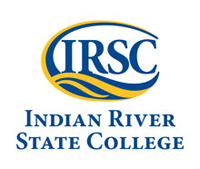Below is a summary of the abstract you submitted. Presenting author(s) is shown in bold.
If any changes need to be made, you can modify the abstract or change the authors.
You can also download a .docx version of this abstract.
If there are any problems, please email Dan at dar78@pitt.edu and he'll take care of them!
This abstract was last modified on May 2, 2018 at 11:51 a.m..

During the 2017-2018 academic year, Indian River State College (IRSC) students successfully isolated 11 bacteriophage using Mycobacterium smegmatis mc2 155 as a host and one bacteriophage using Microbacterium folorarium as a host. Four phage genomes were sequenced. These four phage were the most diverse group of phage that has ever been isolated at IRSC. Mycobacteriophage Fowlmouth, Lizziana, and BoostSeason belong to clusters AC, K, and F respectively while Microbacteriophage Noelani belongs to cluster EE. Phage Fowlmouth was isolated from soil found in a chicken coop. It belongs to cluster AC, of which there is only one other member, Cuke. Phylogenetic analysis of the tapemeasure protein shows that the AC cluster is most closely related to cluster R. The resolvase gene was selected for further study. This gene has an unusual evolutionary history, illustrating the mosaic nature of phage genomes. Phage Lizziana was found to be in subcluster F1. This phage is most closely related to phage ShiLan. The immunity cassette was selected for further analysis and it was found that Lizziana had a Y-integrase and repressor, but lacked the antirepressor found in other F1 phage. Phage BoostSeason is one of nine phage in the K2 subcluster of phages and shares high similarity to phage Mufasa. K2 cluster phages are unique in their ability to infect both M. smegmatis and M. tuberculosis. Conserved regions in Lysin A, Lysin B, Holin, and the minor tail proteins allow for this cross-infectivity. These proteins in BoostSeason, other K2 phage, and A phage were investigated for evolutionary relationships. Finally, the genome of Microbacteriophage Noelani was sequenced. This phage belongs to the EE cluster, along with 11 other phage. Noelani’s genome is small, having only 24 ORFS, eight of which have a known function. One protein of particular interest was the LSR2 DNA binding protein. Homology modeling predicted that this protein is a zinc-finger. Since the phage isolated belong to clusters with few members, their characterization will help us better understand the diversity of actinobacteriophage and provide a valuable resource for comparative analysis.


